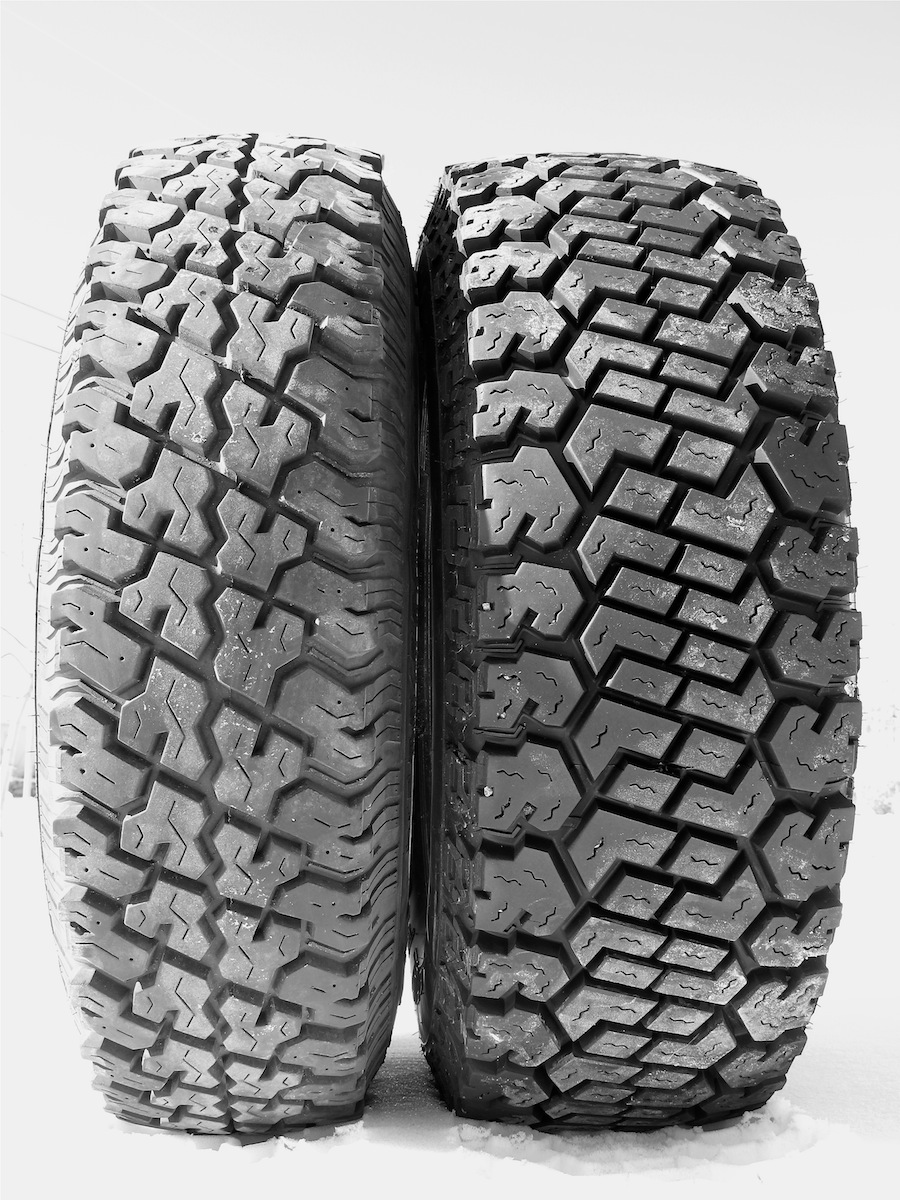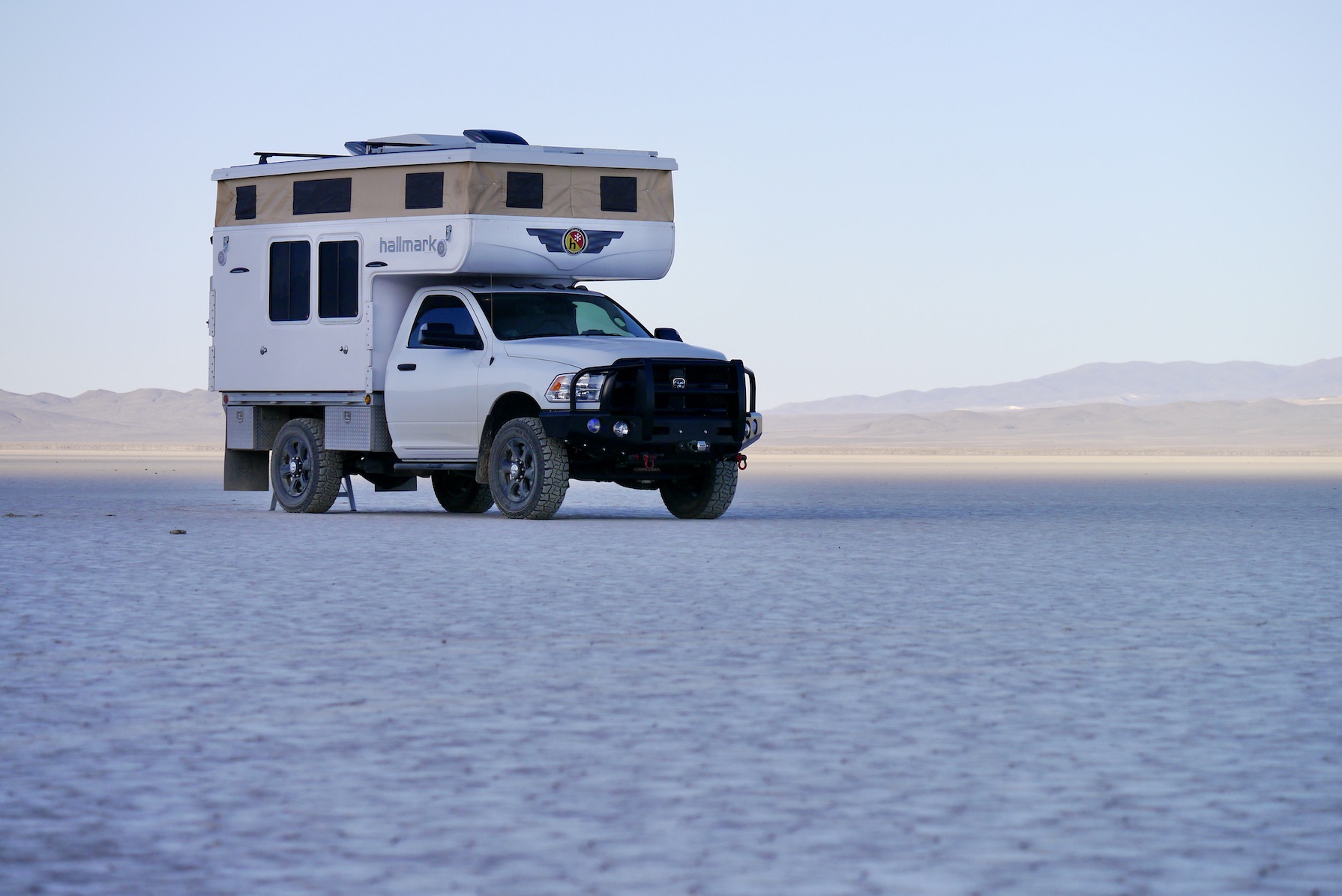Newer, detailed article, click here: Tread Matters
Will The Most Efficient Tires Please Drive Forward
It’s often stated that narrower, lighter, less aggressive tires are more efficient and will yield better fuel economy, but how much better? To properly compare apples and pears one must take care to reduce the variables that are always present during real-world tests. In this case I used the same vehicle, same gas pump, during similar weather conditions and time of day, calculated the odometer error, and used the same section of freeway. The GPS-confirmed road speed was 64-MPH and was maintained by cruise control. The tires were inflated to 35-PSI in all but the last test with the Dick Cepek F-C II treads where I goofed and only used 32-PSI. The F-C II tires performed so well I doubt they could have provided better economy with an extra 3-PSI.

If you think the fuel economy numbers listed below are too high you are partly correct, the tests involved almost zero city driving. The variables of in-town driving are not repeatable and won’t yield consistent data. What these tests do show is the fuel economy potential of this vehicle and establishes a baseline against which other tests can be measured. For each test the modified 2006 4.7L V8 4Runner was fueled and then driven a few blocks to the same freeway onramp, onward to a specific exit, and then the route was reversed and terminated at the same gas pump where the engine was promptly turned off.

All the tires used were close to the same diameter, about 33-inches, and they were all mounted on Toyota FJ Cruiser TRD 16 x 7.5-inch aluminum wheels. Because of the slight differences I tire height, one corrected odometer reading of 56.76-miles was used for all the tests. Listed below with the figures are the weights of each tire/wheel combination.
Results:
Cooper S/T LT255/85R16D: 75-lb 3.027-gal. = 18.75 MPG
Maxxis Bighorn LT255/85R16D: 82-lb 3.017-gal. = 18.81 MPG
TreadWright Guard Dog LT285/75R16E: 87-lb 3.331-gal. = 17.04 MPG
Dick Cepek F-C II LT285/75R16D: 83-lb 3.121-gal. = 18.18 MPG

Commentary
I was a little surprised that the very narrow and light Coopers consumed more fuel than the heavier, more aggressive Maxxis Bighorns. Though when filling-up after the Cooper test the gas-pump didn’t stop normally and a little gas spit from the filler, possibly contributing to the lower reading. Longer distance tests would likely be more accurate, but this type of testing is very time consuming and expensive.
It was expected that the heavier, wider TreadWright Guard Dogs with their aggressive lug tread would use more fuel. The Cepek F-C II tires impressed me by splitting the difference and topping eighteen MPG!

Surely tread design, width, and weight all make a difference. My theory is that width and tread design have a larger impact on fuel economy than tire weight, at least when there is only a few pounds difference. There is five pounds separating the Maxxis Bighorn 255/85R16 and TreadWright 285/75R16, but I don’t think those additional few pounds account for the 1.77 mile-per-gallon difference. There is a seven pound difference between the Maxxis Bighorns and Cooper S/Ts, but the results for these two 255s were so close you could call it a tie.
Your mileage will vary.
Copyright © 2012 James Langan

Thanks for this great post! I’ve been shopping tires lately and have been paying attention to the tire diameter as reported by the manufacturers. Of the tires you tested the Maxxis Bighorns are likely the tallest at 33.31 inches, the Treadwright Guard Dogs and the Dick Cepeks list 33.2. I couldn’t find any data on the Cooper STs in the size you tested. Would the difference of one tenth an inch in diameter have any impact on the mileage results?
The Cooper S/T in 255/85R16 is 33.21 inches tall according to Cooper. No, 1/10″ will not make a measurable difference in fuel economy in the real world, a larger difference in height, width, and/or weight is necessary. The Dick Cepek F-C II in the 285/75R16 size tested is 32.8 inches tall, a common height for all-terrain 285s, whereas some 33″ mud-terrain 285s are a few tenths taller.
It’s hard to see, measure, or care about an overall tire height difference of less that one-half inch, which translates to a 1/4″ overall height difference on a vehicle. However, larger differences came make a substantial difference. For example, I’ve run the smaller 265/75R16 and the taller 255/85R16 back-to-back on the same rig, and there is a noteworthy, 3/4″ ground clearance difference between these two sizes. The difference between most 255/85s and 285/75s are much less, and I’ve found most 33” 285s tall enough.
There are long range plans for another mpg test, same tire size but mud-terrain vs. all-terrain.
I would like to do a test using the same tread, wide and narrow. Though it would likely require different tire heights, as I would like the baseline tire to be a 285, but there are so few narrow 33″ tires.
I like the AT vs MT idea, and that should prove interesting.
The same tire different widths would most likely have to be a 255/85 vs a 285/75…..something like the Cooper ST, BFG KM2, or the Toyo MT, which are the tires I can think of that still have both those sizes.
You’re right James. What I didn’t verbalize were my thoughts about the ‘practicality’ of such a ‘Wide & Narrow, same tread’ test. Unless a very generous sponsor materializes, I don’t see myself doing a same tread and height test. This is because I have already owned the Cooper S/T, BFG M/T (& KM2), and Toyo M/T in 255/85, as well as other tires that are offered in both 255/85R16 and 285/75R16. Since I recently sold my remaining sets of 255/85s, it’s unlikely I’ve be buying replacements anytime soon.
Though not the same size, nor popular with off-highway enthusiasts, I’d like to compare the much narrower (& shorter) 235/85R16 or 235/80R17 to a 285 width tire. What real-world mpg improvement might we see running these very narrow, commercial application tires? Substantial fuel-economy improvement or not, I’m confident I wouldn’t enjoy running a 235 tire for any length of time due to the half-inch in ground clearance I would lose by not running a common, versatile 285.
Weight would have more impact in stop-and-go traffic, the act of accelerating and stopping a heavier rotating mass should task the drivetrain (and braking system) more. It’s a great comparison, James, between wide and narrow tires. I noticed quite a change going from the 255 ST’s to the 285 STMaxx’s, partly due to width but partly (I think) due to tread compound. The next step would be to get a set of narrows and wides of the same tire, which would eliminate tread compounds and tire construction as a variable. I realize you are on a budget, this being your own personal blog comparison, but if you won the lottery…….
BTW, Great Blog!
Really like these kinds of comparison studies. It helps a lot ! Interesting theory about the weight having not so much impact as the width and tread design. Wish you could get a grant to do a longer study ! ! !